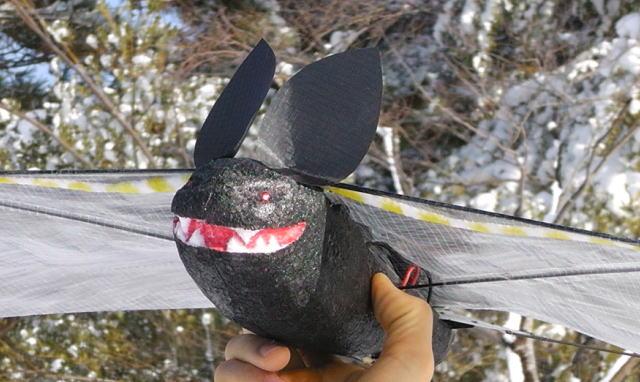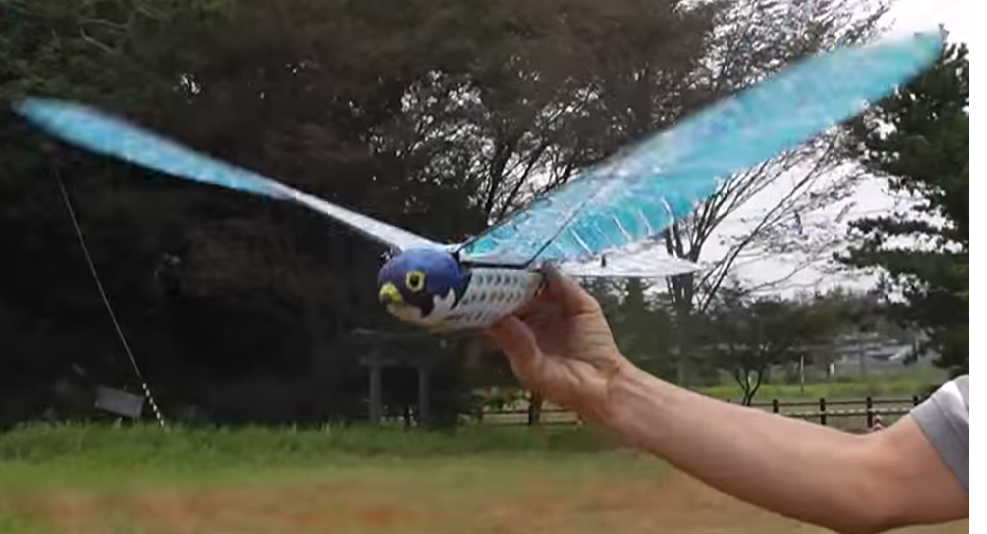 The human fascination with flight has been going on forever. Such envy we experience in watching a simple bird or more complex predator fly almost as high as the heavens; it’s rare that one sees a hawk or eagle overhead and doesn’t watch in awe until it’s out of sight. The curiosity begins in children, and for some it grows into a lifelong hobby or even careers in ornithology.
The human fascination with flight has been going on forever. Such envy we experience in watching a simple bird or more complex predator fly almost as high as the heavens; it’s rare that one sees a hawk or eagle overhead and doesn’t watch in awe until it’s out of sight. The curiosity begins in children, and for some it grows into a lifelong hobby or even careers in ornithology.
For Kazuhiko Kakuta, a medical doctor in Japan, his lifelong interest in birds began when he was very young. He simply never tired of looking anything that flew–from birds and kites, to airplanes. Once he became a successful doctor and had more disposable cash to spend, he took up the hobby of model helicopters, putting them together and flying them, but quickly lost interest.
His interest in flying models was reinvigorated in 2007, however, upon watching a diminutive, remote controlled ornithopter. He decided to try his hand at building them and soon had a creative and wide-ranging collection–starting with an airplane, and then a pteranodon. From there, his interest in making birds–and putting them into 3D print–grew.
“I made bird ornithopters, an insect-type ornithopter, and imaginary world flight objects which appeared in anime and movies,” Kakuta told 3DPrint.com.
In beginning to make 3D printed electronic devices, Dr. Kakuta quickly became aware of the benefits involved. He discovered that fine processing of the gear box and tail became unnecessary as well as assembly and that production time decreased substantially. Another beneficial byproduct was that he was exposed to fewer toxins as well, with the decrease in exposure to harmful carbon dust.
Using Autodesk 123D Design, the Japanese hobbyist begins creating his mixture of 3D printed parts and then adds carbon rod reinforcements. Kakuta makes a framework with the 3D printed components, and then strengthens the wings and body with carbon. He send his digital designs to Shapeways for the actual 3D printing, with his choice material being nylon.
“The 3D printed weight is almost the same as that of the ornithopter bearing all carbon parts,” Kakuta told 3DPrint.com. “The 3D printed pieces can be made symmetrically, and in flight, performance is ‘obedient’ and easy to control.”
For electronics, he employs a brushless motor, speed controller, receiver, and LiPo battery, with the servo controlling the ‘bird’ from within the tail assembly, allowing it to move in the sky with startling realism, with wings fluttering and then becoming quiet as the 3D printed ornithopter soars with incredible grace.
 While many 3D printed innovations offer incredibly important innovations to a variety of sectors, often this technology also gives hobbyists new inspiration during recreational activities too, as digital design offers great latitude in creating models and then either manufacturing them in the home workshop or sending them to 3D printing service bureaus for ease in fabrication. When models are fractured or the hobbyist wants to make a change, that’s easy to do just by going back and tweaking the original file.
While many 3D printed innovations offer incredibly important innovations to a variety of sectors, often this technology also gives hobbyists new inspiration during recreational activities too, as digital design offers great latitude in creating models and then either manufacturing them in the home workshop or sending them to 3D printing service bureaus for ease in fabrication. When models are fractured or the hobbyist wants to make a change, that’s easy to do just by going back and tweaking the original file.
Several of these innovative ornithopters are available in kits through Dr. Kakuta, but anyone can order the kestrel kit from Shapeways. Have you made anything similar with 3D printing? Are you interested in checking out his 3D printed kestrel kit on Shapeways? Discuss in the 3D Printed Ornithopters forum thread over at 3DPB.com.
Subscribe to Our Email Newsletter
Stay up-to-date on all the latest news from the 3D printing industry and receive information and offers from third party vendors.
You May Also Like
Gorilla Sports GE’s First 3D Printed Titanium Cast
How do you help a gorilla with a broken arm? Sounds like the start of a bad joke a zookeeper might tell, but it’s an actual dilemma recently faced by...
Nylon 3D Printed Parts Made More Functional with Coatings & Colors
Parts 3D printed from polyamide (PA, Nylon) 12 using powder bed fusion (PBF) are a mainstay in the additive manufacturing (AM) industry. While post-finishing processes have improved the porosity of...
$25M to Back Sintavia’s Largest Expansion of Metal 3D Printing Capacity Since 2019
Sintavia, the digital manufacturing company specializing in mission-critical parts for strategic sectors, announced a $25 million investment to increase its production capacity, the largest expansion to its operations since 2019....
Velo3D Initiates Public Offering in a Bid to Strengthen Financial Foundations and Drive Future Growth
Velo3D (NYSE: VLD) has been among a number of publicly traded 3D printing firms that have attempted to weather the current macroeconomic climate. After posting a challenging financial report for 2023,...































